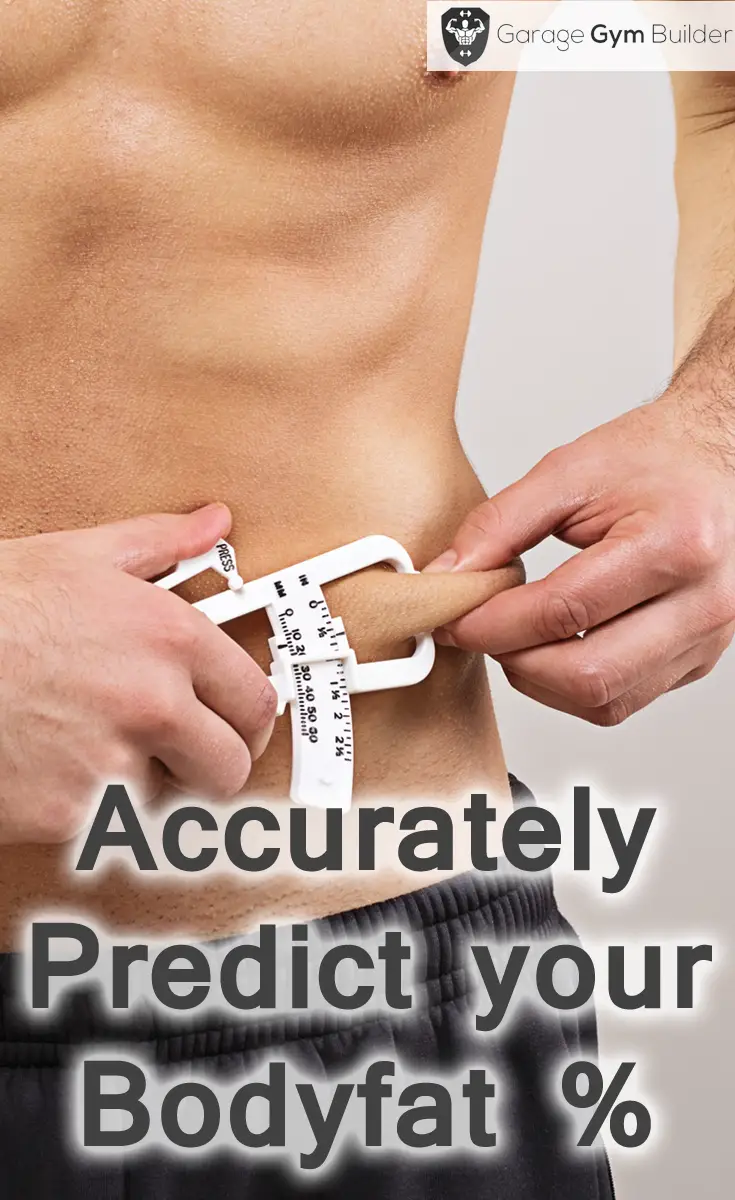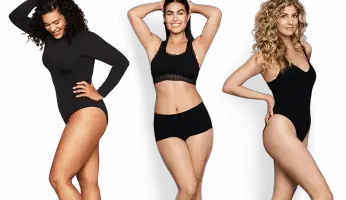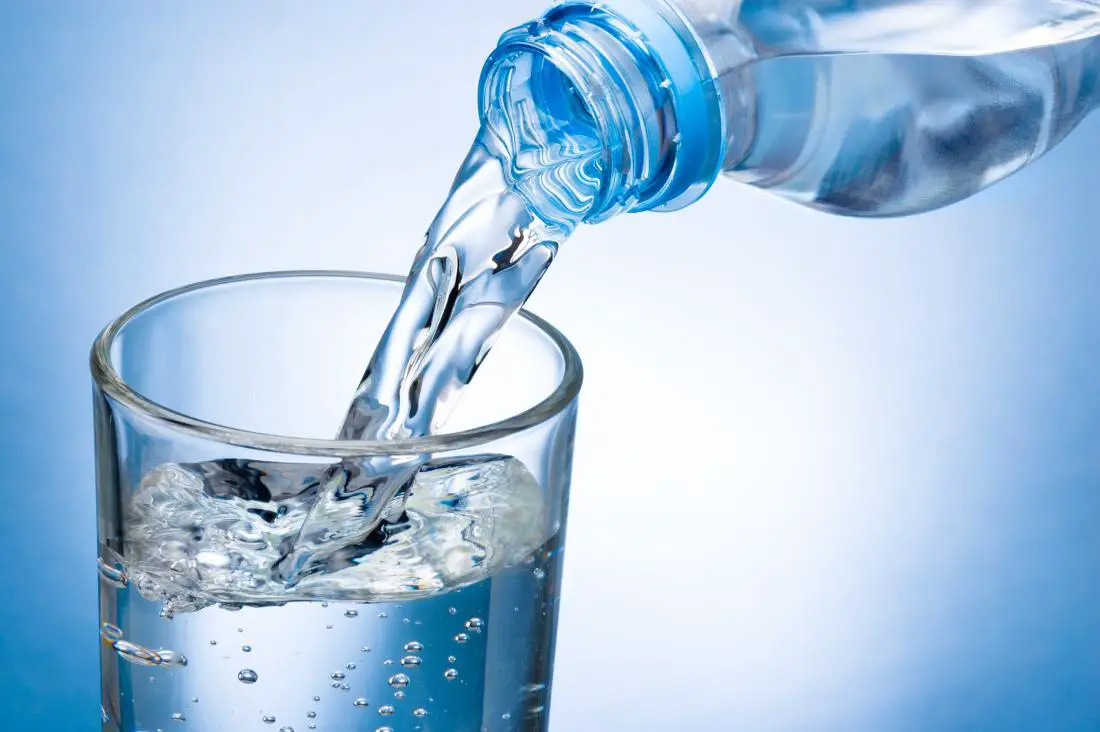How to Weigh Yourself Without a Scale
Today, more and more people are after detailed information about their own physical health. Personal fitness monitors are able to satisfy a large part of this demand. However, the most important statistic can’t be found on any wrist device. That is your body fat percentage. This figure, rather than your weight, or even your body mass index, is the real indicator of how lean and healthy you are. In this article, we’ll get into how you can weigh yourself without a scale.
What is Body Fat Percentage
Your body fat percentage is a percentage of your weight that is comprised of pure fat, rather than muscle tissue, water, organs or bone. Knowing your body fat percentage is important because it is the only accurate way to know just how much excess fat you are carrying on your frame.
In the medical world, the standard way to check fatness is by using the body mass index (BMI). This is a simple calculation based on your height and weight. However, it doesn’t take into account your level of muscle mass, making it useless in the real world. The most accurate body fat scale takes into account your body composition; how much lean mass you have and how much fat you have on your frame.
Why Use The Most Accurate Body Fat Scale?
There are four key reasons why you should be interested in using the most accurate body fat scale:
- It provides individuals with a starting point upon which to base current and future decisions about weight loss and weight gain.
- It provides realistic goals about how to best achieve an ideal balance between the physique’s fat and non-fat compartments.
- It relates to general health status, and as such, plays an important role in the health and fitness goals of all people.
- It monitors changes in the body’s fat and lean components during exercise and nutrition programs, allowing you to monitor the effectiveness of each one.
What is the Ideal Body Fat Percentage?
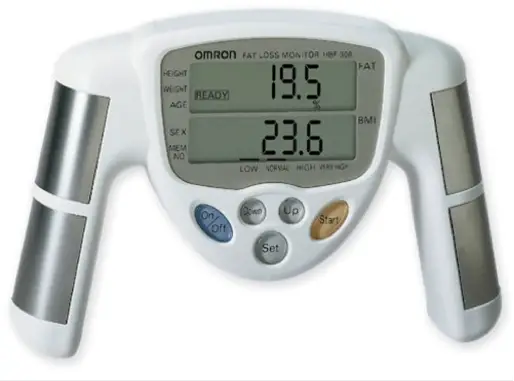
For most guys, the ideal body fat percentage is somewhere around 10-15%. At this range, you do not have any visible body fat that you can grab and you will have an athletic appearance to your body. To get visible abs, you will want to drop into the high single digits, somewhere around 8%. A competitive bodybuilder will be sitting at around 4-6% body fat.
For women, 15-18% body fat will produce a very athletic, sleek look to the physique. To see the abs, women will want to be between 10-12% body fat.
Using the most accurate body fat scale will allow you to monitor how your physique responds to changes in your training regimen, diet, and supplementation program.
The Most Accurate Body Fat Scale
Hydrostatic Testing
The Greek mathematician Archimedes (287-212 BC) discovered that an object’s loss of weight in water equals the weight of the volume of water it displaces. This ancient discovery translates into a practical solution—submerge a person underwater to determine their body volume. Stated somewhat differently, the volume of a submerged object equals the volume of water the object displaces.
By measuring a person’s body volume, we can calculate their body density by dividing the individual’s body mass measured on a scale (i.e., body weight) by their body volume measured during water immersion (body density = body mass – body volume). From body density, a simple equation converts the density value to an estimate of percentage body fat (and from this, the absolute weight of fat, fat-free body mass, and the lean-to-fat ratio).
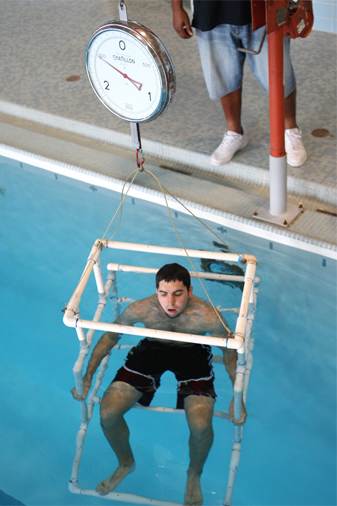
According to Archimedes’ principle, if an object weighs 75 kg in air and 3 kg when submerged in water, the loss of weight in water of 72 kg equals the weight of the displaced water. Because the density of water at any temperature is known, the volume of water displaced can easily be computed. In the example, 72 kg of water is equal to 72 liters or 72,000 cubic centimeters (1 g of water = 1 cc in volume.)
If the water temperature were 4°C, there would be no correction factor. Other water temperatures require a correction factor determined from chemistry tables. The density of the person computed as weight – volume, would be 75,000 g – 72,000 ccs, or 1.0416 g/cc. Once we measure the individual’s body density accurately, the next stage is to convert the density value to a percentage of body fat.
The body’s fat percentage can be determined from a simple equation that incorporates the value for body density. The equation, devised by Berkeley physicist Dr. William Siri and known as the Siri equation, incorporates two constants (495 and 450) and body density (mass/volume) as follows:
Percent body fat (Siri) = 495 ÷ density – 450
In the previous example in which body weight = 75 kg and body volume = 72 liters, the density of 1.0416 g/cc when converted to percent fat in the Siri equation (495 – 1.0416 – 450) equals 25.2%. This value means that for the 125 pounds of body weight, 25.2% consists of fat.
Skinfold Caliper Testing
While hydrostatic testing is the most accurate form of testing, not everyone has access to the lab facilities required to do it. A far more accessible (and cheaper) option is to use skinfold calipers.
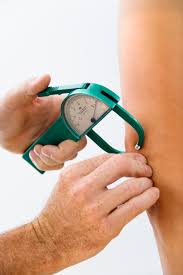
The rationale for taking skinfolds relies on the fact that about one-half of the body’s total fat stores lie directly beneath the skin, and this fat volume relates closely to the body’s total fat content. By 1930, researchers used a special pincer-type caliper to measure subcutaneous fat on the trunk and extremities with relative accuracy.
To measure a skinfold thickness, grasp a fold of skin and subcutaneous fat with your thumb and forefinger, pulling it away from the natural contour of the physique. The caliper’s pincer arms at their point of skin contact exert constant tension. Read the thickness of the skin’s double layer and subcutaneous tissues directly from the caliper dial and record the measurement in millimeters.
The most common anatomic sites for taking skinfolds are the following:
- Triceps
- Subscapular
- Suprailiac
- Abdominal
- Upper thigh
- Chest
- Mid-axillary
- Medial calf.
Take all measurements on the right side of the physique with the subject standing. Take a minimum of two or three measurements at each site, using the average as the skinfold score. If you are intent on packing on mass in 2019, check out our Best Muscle Building Reviews 2019 super article – it’s got you covered.
How To Measure
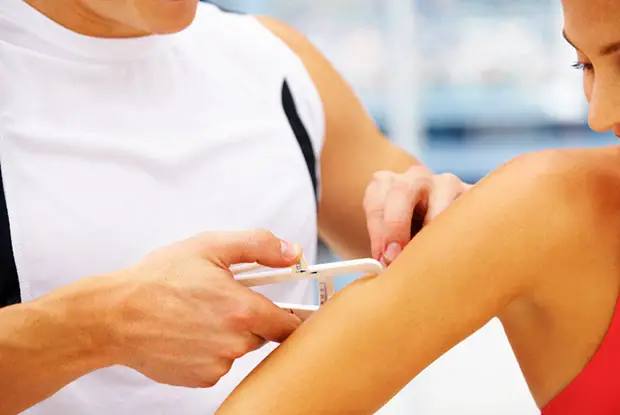
Triceps – vertical fold measurement at the midline of the upper arm halfway between the tip of the shoulder and the tip of the elbow.
Subscapular – measure the fold located along an oblique line just below the bottom line of the scapula.
Suprailiac – slightly oblique fold measured just above the hip bone. The fold is lifted to follow the natural diagonal line at this point.
Abdomen – measure the fold vertically so that the caliper tips fall one inch to the right of the umbilicus.
Thigh – vertical fold measurement at the midline of the thigh, two-thirds of the distance from the knee-cap to the hip on the anterior surface.
Mid-Axillary – Measure the fold in a horizontal line at the mid-axillary line level with the bottom of the sternum.
Lower Back – Measure the fold in a horizontal line directly over the kidney, about two inches to the right of the spine.
Chest – diagonal fold between the anterior auxiliary fold and the nipple, taken one inch from the anterior auxiliary fold.
Calf – measure the vertical fold at the medial aspect of the maximal girth with the knee and hip flexed at 90 degrees.
You should take the measurements once at each site and then repeat the measurements within a few minutes. Repeat the above sequence one additional time so a total of three sets of measurements are available. At the end of the data collection procedure, you will have made 3 repeat measurements at each of the mime sites. For each site, add up the three results and divide them by three to get an average number.
There are a number of equations that you can use to determine your body fat percentage from the above. One method, using all nine measurement sites, is the Parillo Caliper Method. It uses the following formula:
% Body Fat = (Sum of 9 sites x 27) divided by body weight (lbs)
This is a simple formula that takes into account a large number of sites. Its problem, however, is that it does not differentiate between men and women. The Jackson and Pollock method, though not using all 9 sites, does differentiate . . .
Men
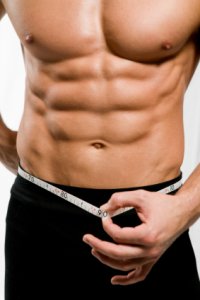
% Body Fat = (0.29288 x sum of skinfolds) – (0.0005 x square of the sum of skinfolds) + (0.15845 x age) – 5.76377, where the skinfold sites (measured in mm)
The above equation is based on measuring only four sites:
- Abdominals
- Triceps
- Thighs
- Suprailiac
To perform this exercise, you should load the EZ bar bicep curl bar with about 75% of the weight you would normally use for 8 reps. Perform your first seven reps by only coming from the bottom of the curl up to the half what point. That means that on each rep, the bar should stop as your forearms are in a position that is parallel to the floor.
Once you’ve completed 7 reps, perform your 8th by going all the way to the top of the movement. However, only come down to the midway point (again parallel to the floor). Do another 7 reps from this midpoint to the top of the movement for a total of 14 reps. The 15 rep should be a complete repetition from bottom to top. Do this for the last 7 to give you a total of 21 reps.
Women

% Body Fat = (0.29669 x sum of skinfolds) – (0.00043 x square of the sum of skinfolds) + (0.02963 x age) + 1.4072
Confused about the supplements you need to perform at your peak? Check out our review here for the complete breakdown.
BIOELECTRICAL IMPEDANCE (BIA)
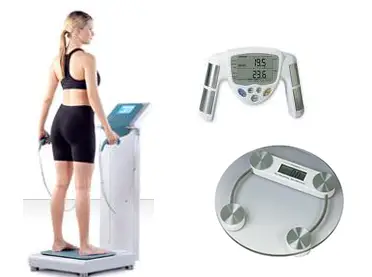
BIA predicts body composition by estimating body water content. Body water can estimate lean body mass because most body water is located in lean tissues. The technique works by sending a small electrical charge through the body and measuring the body’s resistance to it. Equations predict total body water from whole body electrical resistance.
This method is fairly accurate in most people (about the same as skinfolds). As with other indirect measurements, it attempts to predict the results of the underwater weighing test. The BIA test is rapid and easy to administer. The disadvantage, unfortunately, is that it can be grossly inaccurate for most people who are not close to the average body composition for their age and sex.
BIA testing technology can be found in such devices as the most accurate body fat scale.
Legion supplements are one of the breakout brands of the last 12 months. Discover their range with our Legion Supplements Review 2019 in-depth analysis of their best offerings.
Conclusion
The most accurate body fat scale is to do hydrostatic underwater testing in a laboratory. However, this is not the most practical method for most people. We believe that the best way how to figure out the body fat percentage is to use skinfold caliper testing. The best bodyfat calculator for women is to use a four skinfold test (chest, triceps, thigh, and suprailiac) and then apply the female version of the Jackson and Pollock method.
